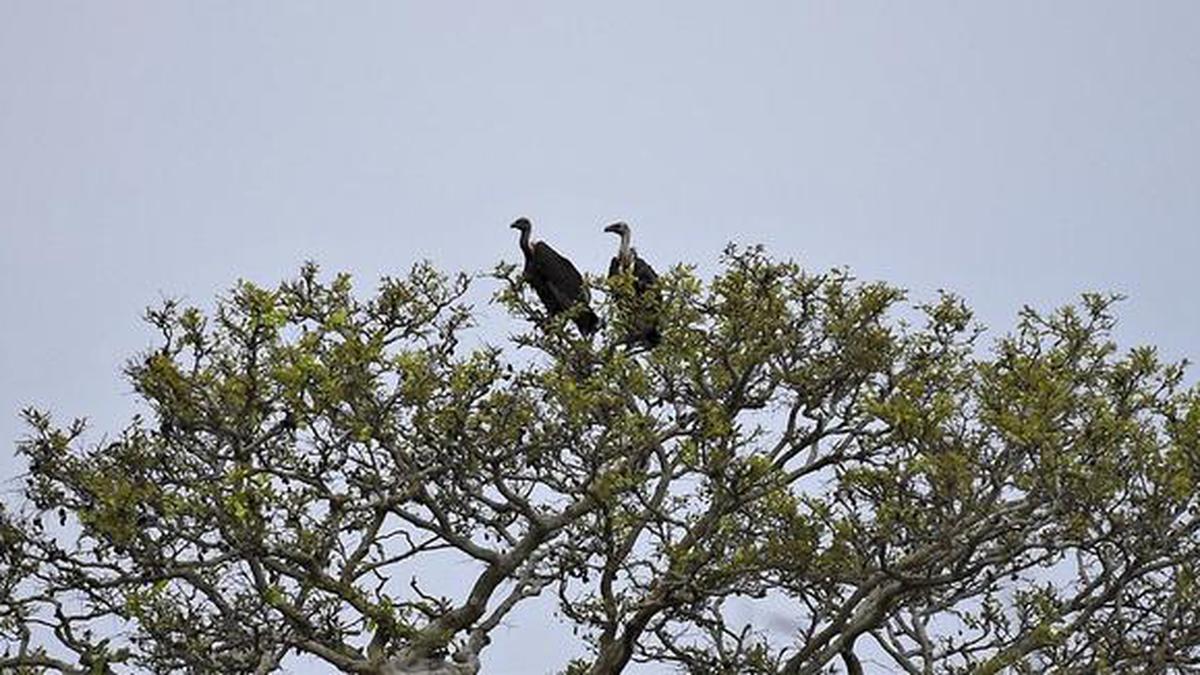The recently completed synchronous vulture survey in the Nilgiri Biosphere Reserve (NBR) revealed significant insights into the vulture population in the region. The survey covered parts of Kerala, Tamil Nadu, and Karnataka.
Survey Locations
The Mudumalai-Sathyamangalam-Bandipur-Wayanad complex within the NBR played a crucial role, accounting for over 82% of the vultures recorded during the survey. Notably, the Mudumalai and Sathyamangalam Tiger Reserves in Tamil Nadu recorded the highest number of vultures.
The survey encompassed the following reserves and sanctuaries:
- Mudumalai Tiger Reserve
- Bandipur Tiger Reserve
- Billigiri Ranganatha Swamy Temple Tiger Reserve
- Nagerhole Tiger Reserve
- Wayanad Wildlife Sanctuary
- Nellai Forest Division
Vulture Species Recorded
The survey documented a total of:
- 217 critically endangered white-rumped vultures (Gyps bengalensis)
- 47 long-billed vultures (Gyps indicus)
- 50 Asian king vultures (Sarcogyps calvus)
- 4 endangered Egyptian vultures (Neophron percnopterus)
- 2 “near threatened” Himalayan griffon vultures (Gyps himalayensis)
Population Increase
Compared to the previous synchronous vulture census in February 2023, where 246 vultures were recorded, the recent survey in December 2023 reported an increase to 320 individuals.
Conservation Efforts
The Tamil Nadu government, in collaboration with an expert panel established in 2022, has implemented various conservation measures:
- Carcass-handling protocol to ensure more availability of food for vultures.
- Strict implementation of the ban on Non-Steroidal Anti Inflammatory Drugs (NSAIDs), harmful to vultures.
- Prosecution of 104 manufacturers and sellers of multi-dose diclofenac vials.
Future Initiatives
The state government plans to:
- Establish a rescue and rehabilitation center for injured vultures.
- Declare “vulture-safe zones” prohibiting the use of NSAIDs.
Multiple Choice Questions (MCQs):
- Where did the majority of vultures in the Nilgiri Biosphere Reserve survey come from?
- A) Wayanad Wildlife Sanctuary
- B) Bandipur Tiger Reserve
- C) Nagerhole Tiger Reserve
- D) Mudumalai Tiger Reserve
- Answer: D) Mudumalai Tiger Reserve
- Which vulture species recorded in the survey is classified as “near threatened”?
- A) White-rumped vulture
- B) Asian king vulture
- C) Egyptian vulture
- D) Himalayan griffon vulture
- Answer: D) Himalayan griffon vulture
- What was the total number of vultures recorded in the recent survey?
- A) 246
- B) 300
- C) 320
- D) 350
- Answer: C) 320
- Which state government prepared a framework for vulture conservation, including the creation of an expert panel?
- A) Karnataka
- B) Tamil Nadu
- C) Kerala
- D) Maharashtra
- Answer: B) Tamil Nadu
- What measure has been implemented to ensure more availability of food for vultures according to the Forest Department?
- A) Ban on veterinary treatments
- B) Carcass-handling protocol
- C) Non-Steroidal Anti Inflammatory Drugs (NSAIDs)
- D) Forest fires control
- Answer: B) Carcass-handling protocol
